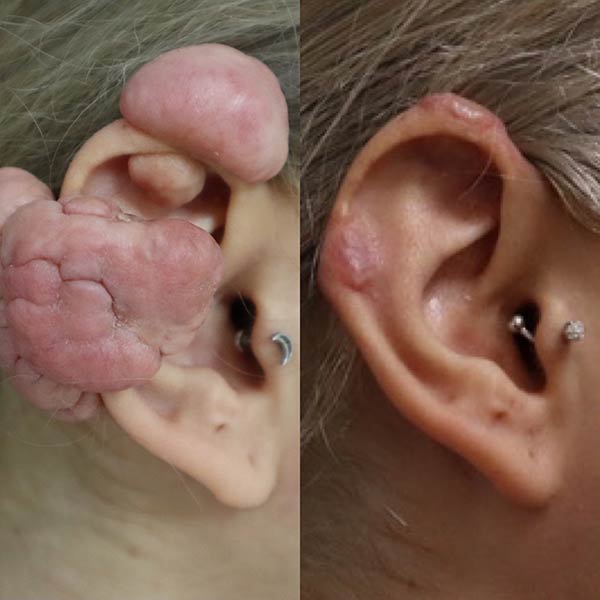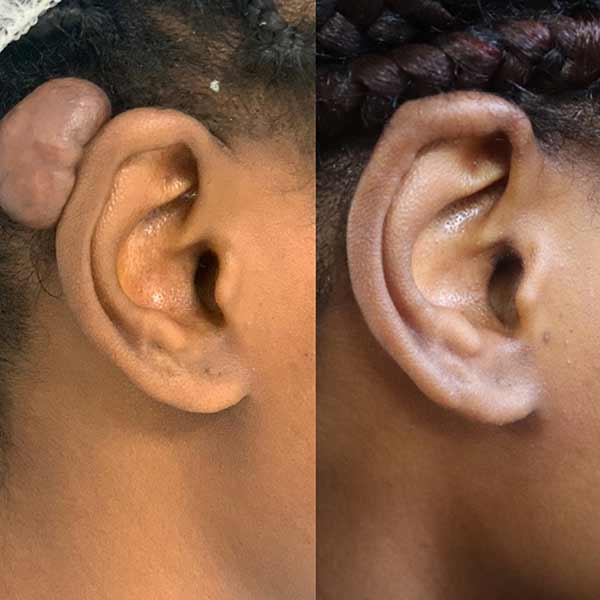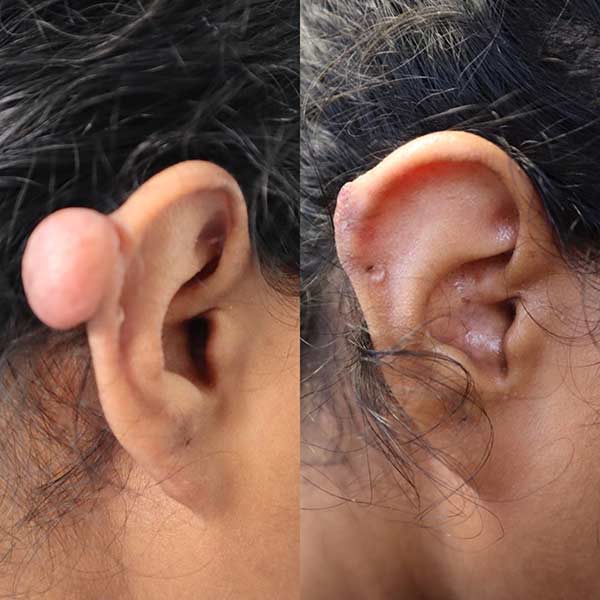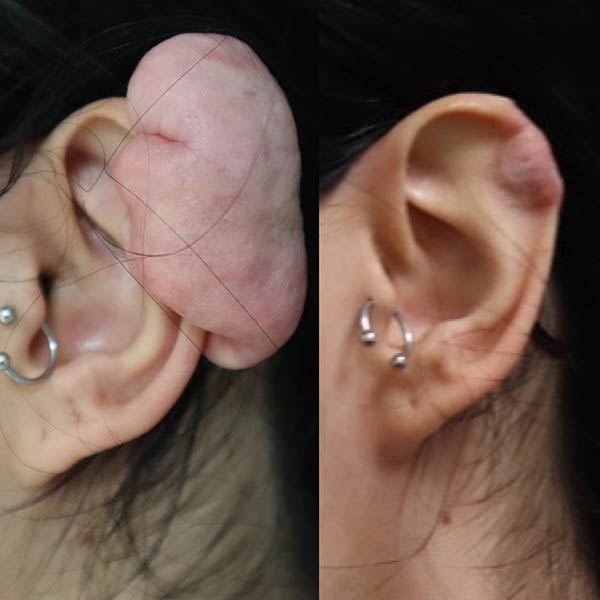Scar revision surgery is usually needed for scars that are unsightly due to the their visibility, appearance and symptoms they cause. The commonest types of scars that patients request revision for are for thick scars that follow the original line of the scar known as hypertrophic scars, or for a thick, large, round scar known as a keloid.
Typical areas for keloids are the ears (after piercing), chest, shoulder and lower abdomen. However, keloids can occur in other areas less commonly.
Scars are complex and the goal of any scar revision is to make the scar less noticeable to the client and those people the client comes into contact with. There are non-surgical ways scars can be revised which most clients try such as make up but there are treatments for thick scars that may involve steroid injections. Steroids can soften a scar, thin the scar and also fade the colour away and are most effective for scars that are not too bulky. Several injections are often needed. Other non-surgical treatments include the use of botulinum toxin.
Surgical methods are often used to reduce the size and bulk of keloids. This often involves removing a significant part of the keloid then injecting steroid into the remaining smaller part that is left over. Also, pressure therapy e.g. a pressure clip on an earlobe keloid can aid in reducing the chance of recurrence of the keloid.
There are other methods of treating keloids such as injections of 5-Flurouracil; freezing the inside of the keloid – cryoablation and also using X-rays to damage to the genetic code of the keloid to stop it regrowing.
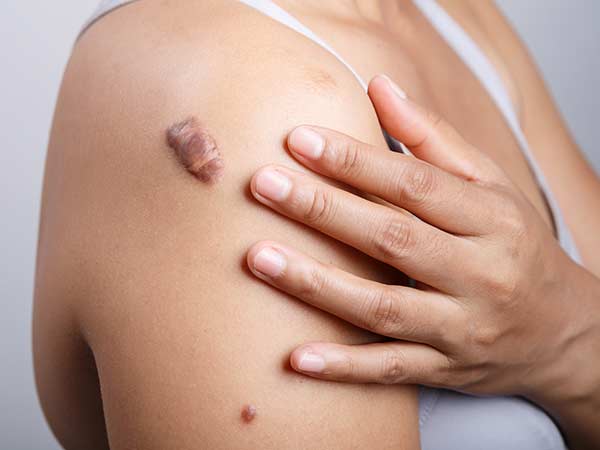
Typical Duration Of Keloid Correction Procedures
Surgery for scars is dependant on whether a simple revision of hypertrophic scar is needed or complex scar revision to reduce the size of a keloid and reshape it. Most scar revision surgery can be undertaken using local anaesthetic injections to numb the area as day case with no overnight stay needed.
Risks Of Keloid Surgery
Steroids do have side effects such as thinning the skin, making the blood vessels in the skin stand out more and also thinning the fat within the skin.
The main risk for any surgery to a keloid is a recurrence of the keloid. Partial removal reduces the risk of the keloid re-growing back to the size it was before, however, total surgical removal of a keloid is known to cause much more aggressive re-growth of the keloid and is not usually recommended. Bleeding, infection and wounds re-opening are less commonly found.
It’s important to understand that scars cannot be magically airbrushed away and that a scar revision involves trading the original scar for hopefully a better quality scar.
Recovery Time
Most patients heal within a few weeks and sutures are normally removed between a week or two depending on where the original scar was located.


